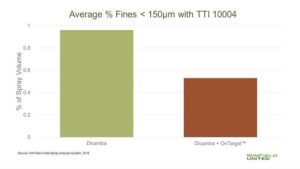Daily Dicamba Update: All About Drift Reduction Agents
In almost every case, writes WinField United agronomist Dennis Christie, following the rules for an accurate and lawful dicamba application means adding a drift reduction agent (DRA) to the tank mix.
But you can’t just add any random DRA off the shelf. Your options are limited to DRAs that are EPA approved and listed on the product label.
Here’s a couple additional pointers regarding DRAs that we gleaned from a recent post by Christie on the WinField United Growing Knowledge Blog:
-
You need to find and review the lists of approved DRAs for each product on the various manufacturers’ websites. It’s also important to remember, Christie shares, that applicators should double check any possible state requirements – as these can change over time – within a week before any application of a low-volatility dicamba herbicide.
- DRAs equal larger spray droplets. Larger spray droplets equal better canopy penetration, as well as fewer droplets overall, so applicators need to be mindful of guidelines for spray volume. Christie says that most dicamba tank mixes should be applied at 15 gallons per acre but urges applicators to double check the label, and also consult your organization’s agronomist to be sure, prior to the job.
Read more on the label requirements here:
Get top-of-mind reminders on the new compliance and regulatory rules on dicamba directly to your email inbox. Subscribe to CropLife’s Daily Dicamba Update.







